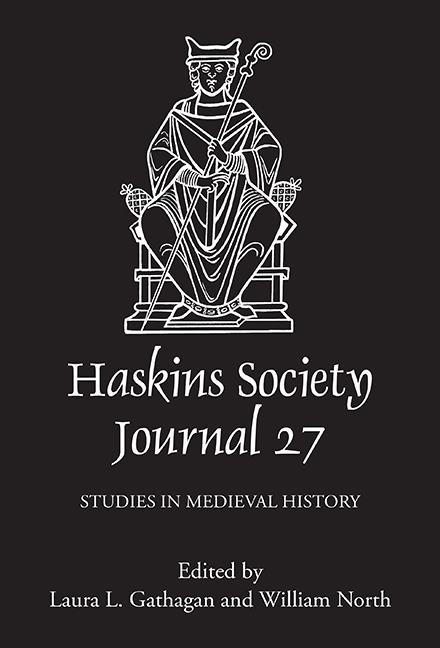Book contents
- Frontmatter
- Contents
- List of Figures
- Editors’ Note
- Abbreviations
- 1 Rural Settlement in Roman Britain and Its Significance for the Early Medieval Period
- 2 Holy Relics, Authority, and Legitimacy in Ottonian Germany and Anglo-Saxon England
- 3 Beyond the Obvious: Ælfric and the Authority of Bede
- 4 Byrhtferth’s Historia Regum and the Transformation of the Alfredian Past
- 5 Geoffrey le Bel of Anjou and Political Inheritance in the Anglo-Norman Realm
- 6 Observations on the Twelfth-century Historia of Alfred of Beverley
- 7 Helena, Constantine, and the Angevin Desire for Jerusalem
- 8 The Revolts of the Embriaco and the Fall of the County of Tripoli
- 9 Jewish Women, Christian Women, and Credit in Thirteenth-Century Catalonia
- 10 Military Entrepreneurs in the Armies of Edward I (1272–1307) of England
1 - Rural Settlement in Roman Britain and Its Significance for the Early Medieval Period
Published online by Cambridge University Press: 07 May 2022
- Frontmatter
- Contents
- List of Figures
- Editors’ Note
- Abbreviations
- 1 Rural Settlement in Roman Britain and Its Significance for the Early Medieval Period
- 2 Holy Relics, Authority, and Legitimacy in Ottonian Germany and Anglo-Saxon England
- 3 Beyond the Obvious: Ælfric and the Authority of Bede
- 4 Byrhtferth’s Historia Regum and the Transformation of the Alfredian Past
- 5 Geoffrey le Bel of Anjou and Political Inheritance in the Anglo-Norman Realm
- 6 Observations on the Twelfth-century Historia of Alfred of Beverley
- 7 Helena, Constantine, and the Angevin Desire for Jerusalem
- 8 The Revolts of the Embriaco and the Fall of the County of Tripoli
- 9 Jewish Women, Christian Women, and Credit in Thirteenth-Century Catalonia
- 10 Military Entrepreneurs in the Armies of Edward I (1272–1307) of England
Summary
It is now just over thirty years since the report on the excavation of a major early medieval settlement site at Cowdery's Down, Basingstoke was published (Figure1). That publication was followed-up by a paper seeking to place the remarkable architectural evidence revealed at Cowdery's Down into a broader British and European context. In particular, we discussed how the settlement and architectural tradition related to the issue of continuity or discontinuity between Roman and early medieval Britain. It is perhaps timely to stand back from the evidence provided by that site to consider how information about architecture and rural settlement now looks in relation to these broader debates. This is particularly worthwhile now since there has been a vast increase in the amount of evidence available from Britain, and a series of projects is underway that will soon produce a set of new syntheses of the evidence. As I hope to make clear, recent research raises a number of interesting issues but ones that are difficult to address both because of contrasting academic traditions and because of the different character of the data from the Roman and early medieval periods. It seems self-evident, therefore, that if we are to arrive at a better understanding of the transition between Roman and early medieval Britain, we need to create understandings that bridge this academic divide.
Although I do not want to discuss the evidence and interpretation of Cowdery's Down in detail in this paper, it is worth saying something about the nature of the evidence and outlining our conclusions about it. The early medieval phases of the site were found by chance during an excavation that had been designed to investigate features revealed by aerial photography in advance of building operations. The fifth- to seventh-century buildings lay to one side of an Iron Age and Romano-British settlement site, which itself overlay Bronze Age burial mounds and settlement features. The most remarkable feature of the early medieval phase was the quality of evidence for its architecture. Most of the sixteen timber halls excavated had their foundations cut into the white chalk bedrock, but the topsoil had a high clay content and a contrasting reddish brown colour.
- Type
- Chapter
- Information
- The Haskins Society Journal 272015. Studies in Medieval History, pp. 1 - 14Publisher: Boydell & BrewerPrint publication year: 2016



